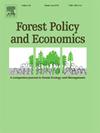欧盟森林砍伐条例:对全球森林部门的影响
IF 4
2区 农林科学
Q1 ECONOMICS
引用次数: 0
摘要
欧盟森林砍伐条例(EUDR)旨在防止与森林砍伐有关的产品进入欧盟市场。本研究利用森林资源展望模型(foreresource Outlook Model, FOROM)——全球森林部门的部分均衡模型,评估了EUDR对全球林产品市场的潜在影响。我们模拟了两种情景:侧重于商品驱动的毁林和城市化的基线EUDR情景,以及包括农业转移的扩展EUDR+情景。结果表明,巴西、印度尼西亚和马来西亚等毁林率高的国家预计将面临圆木产量和出口的大幅减少,并对锯木和面板价格产生下游影响。相比之下,像加拿大和美国这样的低森林砍伐国家可能会小幅增加产量以满足欧盟的需求,但它们的影响受到适度的森林砍伐率的限制。该研究还强调了市场泄漏的可能性,即与森林砍伐有关的产品可能会转移到非欧盟市场,从而可能破坏全球环境目标。重要的是,我们发现森林砍伐率的下降可以减轻一些影响,降低EUDR对全球木材采伐的总体影响。然而,全球供应链的复杂性和治理薄弱地区的执法挑战可能会限制监管的有效性。本文章由计算机程序翻译,如有差异,请以英文原文为准。
The European union deforestation regulation: Implications for the global forest sector
The European Union Deforestation Regulation (EUDR) aims to prevent deforestation-linked products from entering the EU market. This study assesses the potential impacts of the EUDR on global forest product markets using the FOrest Resource Outlook Model (FOROM), a partial equilibrium model of the global forest sector. We simulate two scenarios: the baseline EUDR, focused on commodity-driven deforestation and urbanization, and an extended EUDR+ scenario, which includes shifting agriculture. The results indicate that high-deforestation countries, such as Brazil, Indonesia, and Malaysia, are expected to face significant reductions in roundwood production and exports, with downstream effects on sawnwood and panel prices. In contrast, low-deforestation countries like Canada and the United States may experience slight increases in production to meet EU demand, but their impact is limited by moderate deforestation rates. The study also highlights the potential for market leakage, where deforestation-linked products may shift to non-EU markets, potentially undermining global environmental goals. Importantly, we find that declining deforestation rates could mitigate some of the impacts, reducing the overall effect of the EUDR on global timber harvests. However, the complexity of global supply chains and enforcement challenges in regions with weak governance could limit the regulation's effectiveness.
求助全文
通过发布文献求助,成功后即可免费获取论文全文。
去求助
来源期刊

Forest Policy and Economics
农林科学-林学
CiteScore
9.00
自引率
7.50%
发文量
148
审稿时长
21.9 weeks
期刊介绍:
Forest Policy and Economics is a leading scientific journal that publishes peer-reviewed policy and economics research relating to forests, forested landscapes, forest-related industries, and other forest-relevant land uses. It also welcomes contributions from other social sciences and humanities perspectives that make clear theoretical, conceptual and methodological contributions to the existing state-of-the-art literature on forests and related land use systems. These disciplines include, but are not limited to, sociology, anthropology, human geography, history, jurisprudence, planning, development studies, and psychology research on forests. Forest Policy and Economics is global in scope and publishes multiple article types of high scientific standard. Acceptance for publication is subject to a double-blind peer-review process.
 求助内容:
求助内容: 应助结果提醒方式:
应助结果提醒方式:


